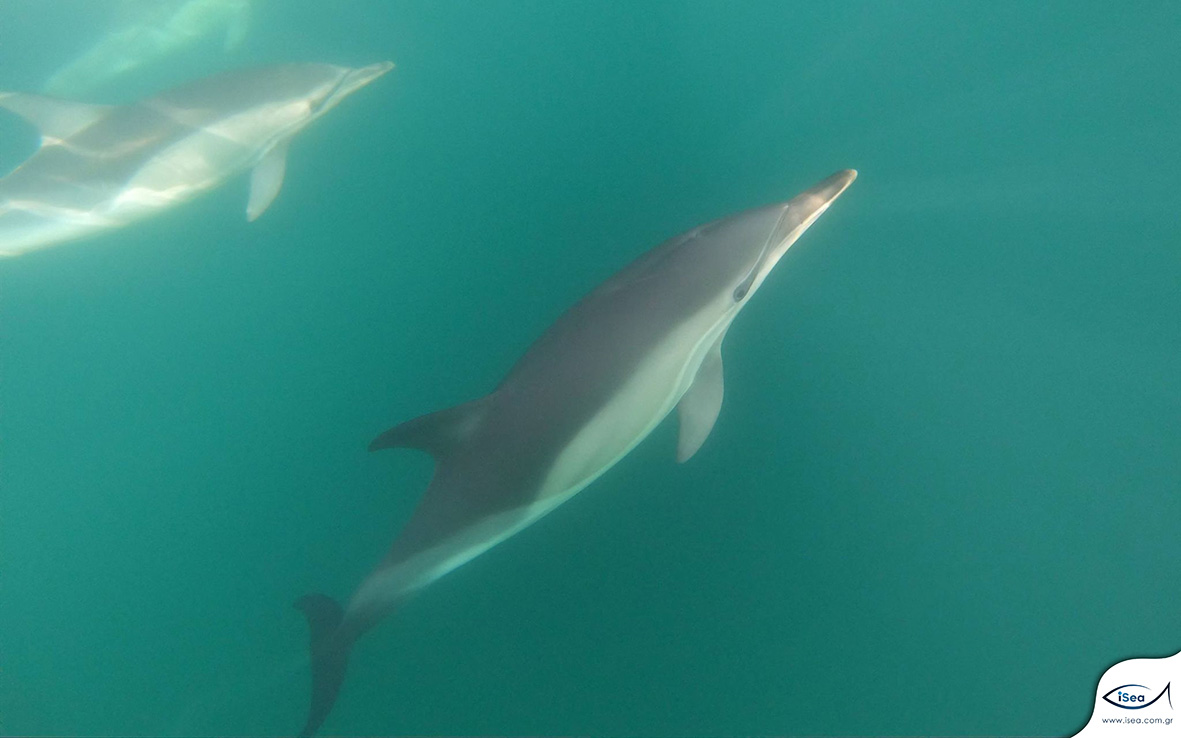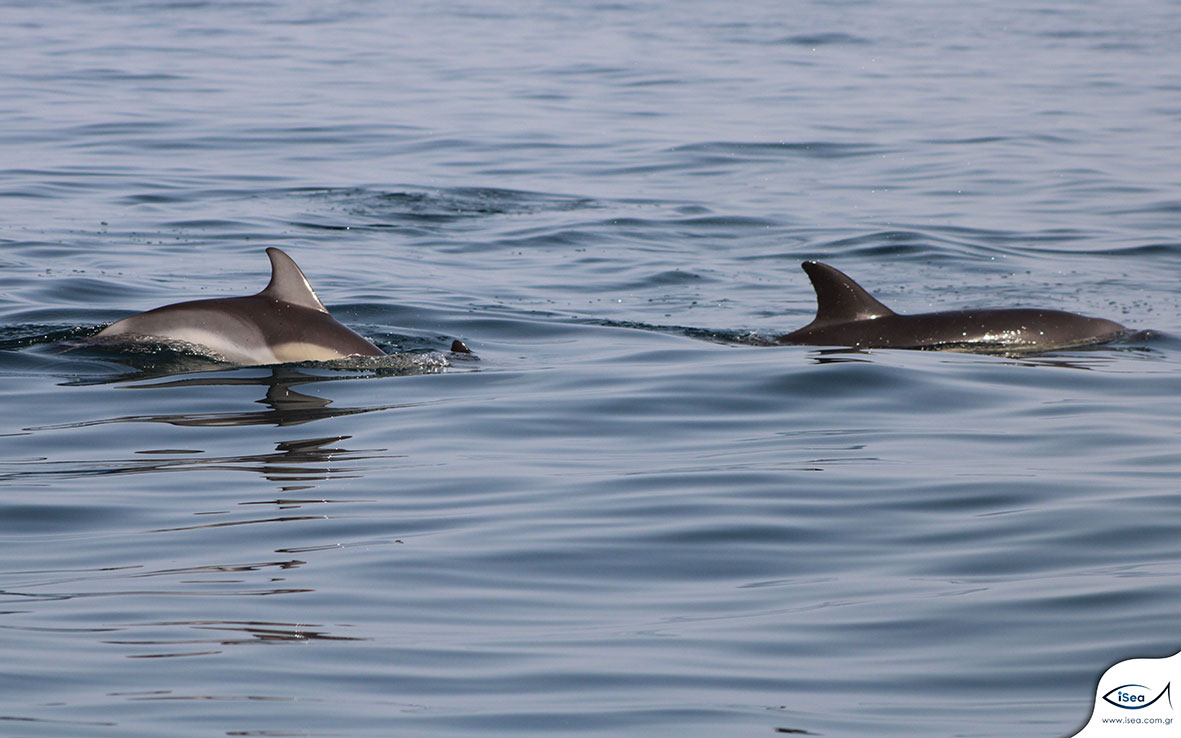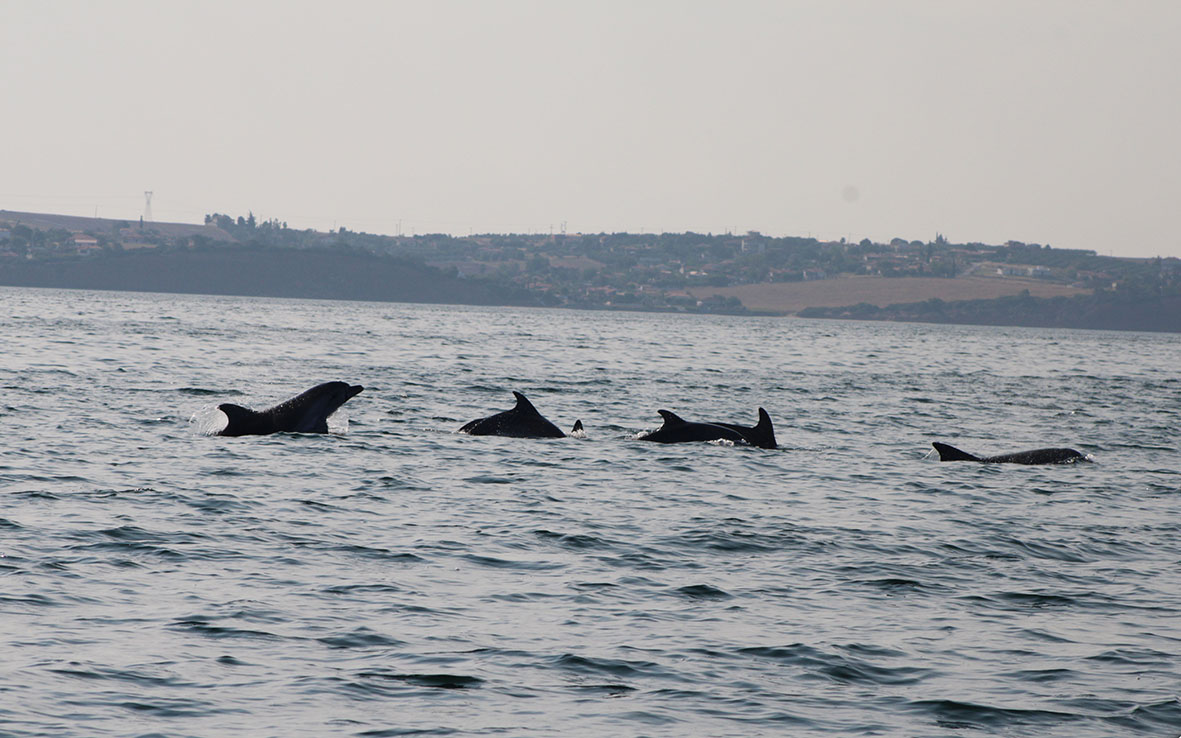“The Thermaikos Dolphin Project, which started at the end of spring with the support of Sani Resort, includes the systematic monitoring of the cetaceans of Thermaikos Gulf using photo identification. The project also includes educational workshops for children, in order to inform them about the cetaceans and the biodiversity of our country in general,” iSea’s education program manager Anastasia Haritou shared with the Athens-Macedonian News Agency.
As she explained, the dolphins’ identification mark is their fins, which are “equivalent to the human fingerprint”. The registration and study of the population and distribution of the species in the Thermaikos Gulf is carried out based on this.

© iSea
“So far two different species of dolphins have been identified in the area, bottlenose dolphins (Tursiops truncatus) and short-beaked common dolphins (Delphinus delphis). Bottlenose dolphins are the most prevalent dolphin species in Greece and is often found in coastal areas. That said, the population of the once so common dolphins has declined extremely in recent decades, making them rare.”
The number of individuals of the common dolphin has declined so much in the Mediterranean in fact, that it’s now considered endangered. The reasons are overfishing of its food, and entanglement in fishing gear. However, according to iSea, despite the overall decline of the species’ population, the North Aegean Sea constitutes an area where it is still present in fairly high numbers even today.

© iSea
According to Ms Haritou, “the main objective of the project is both to systematically study the distribution and behavior of dolphins that are permanently or occasionally found in the area, and to record their behavior in their natural habitat – an area with significant biodiversity and important activities for the country’s economy”.
“In addition,” she continued, “we are interested in promoting the rich biodiversity of the area among locals and tourists, with the aim of ‘exploring’ it further in ways that promote scientific research, but also give the public the opportunity to interact and learn about wildlife while being in nature, without interfering with it.”
[ANA-MPA]












